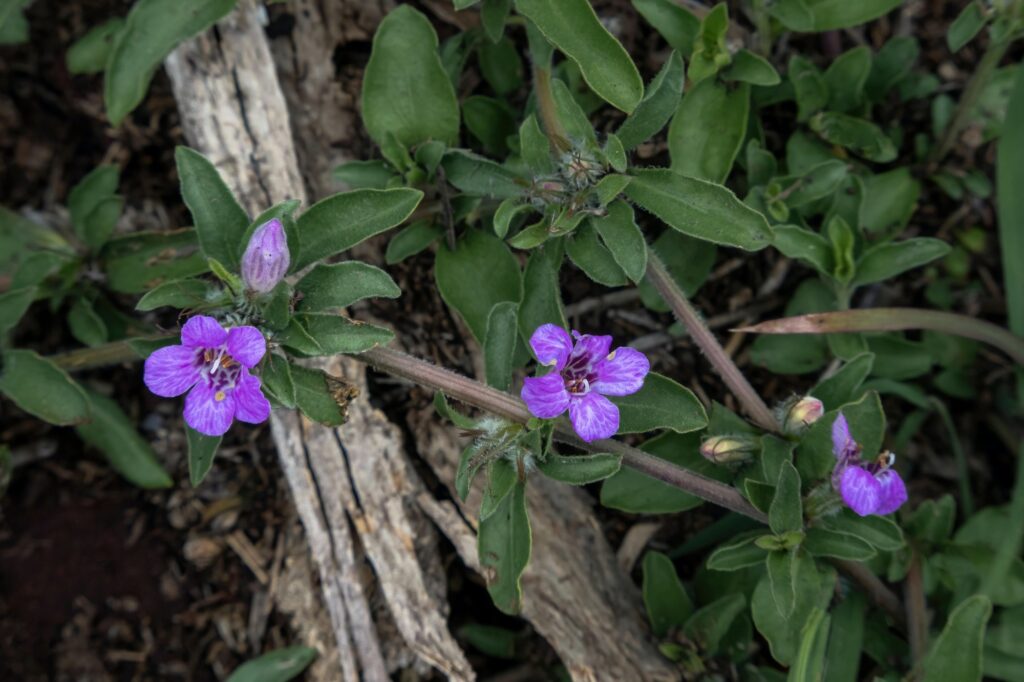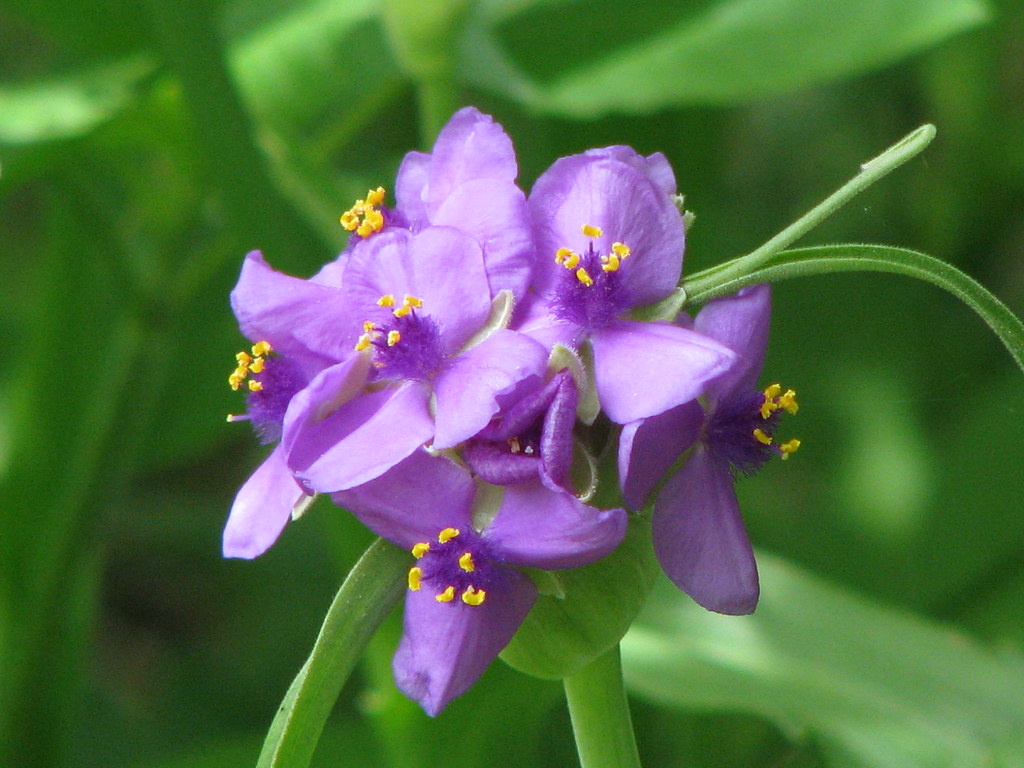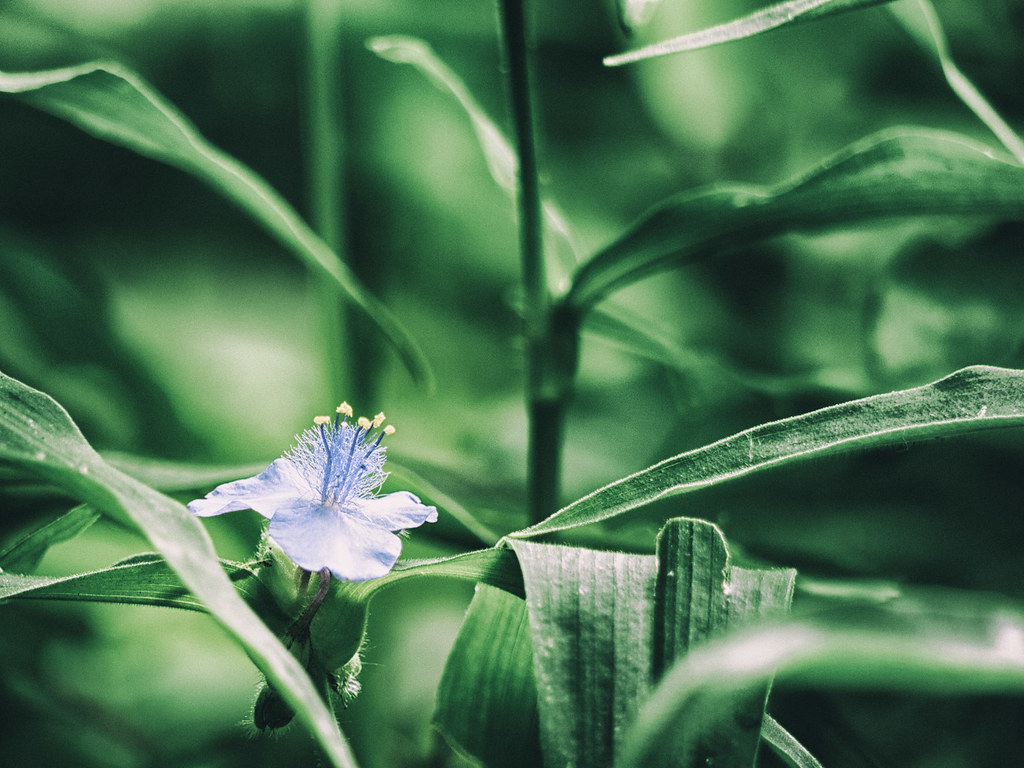12 Fascinating Facts About Spiderwort

Introduction
Spiderwort belongs to the plant genus Tradescantia, which contains around 75 species1. These herbaceous perennials are native to the Americas, ranging from Canada to Argentina.
In the 17th century, spiderwort charmed European gardeners and was brought back to cultivate. Today it continues to enchant nature lovers in gardens worldwide.
The most common spiderwort species have bright blue or purple flowers with three petals, but they also come in pink, red, and white. Their blooms only last a single day, but the plants continuously produce new buds throughout summer.
Now let’s uncover 12 captivating details about Tradescantia’s origins, physical traits, traditional uses, and growing requirements.
1. Unique Origin of Its Name
As mentioned, spiderwort gets its unusual moniker from the slimy sap that oozes from cut stems and forms thin strands. Early observers thought these strands resembled spider webs covered with dew.
The “wort” part simply means “plant” in Old English. Some also say its clustered buds look like tiny spiders preparing to hatch.
2. Extensive Traditional Uses
Native Americans utilized almost every part of spiderwort for food or medicine. Cherokee herbalists prescribed spiderwort tea to stimulate breastmilk production and relieve kidney issues.
The leaves can be eaten raw in salads or cooked as potherbs. Crushed roots applied topically soothe insect bites, minor wounds, and skin irritations.
3. Natural Source of Radiation Detectors
Spiderwort plants are hypersensitive to radiation. When exposed, their cells mutate and the plant’s blue flowers turn pink.
In the 1960s, Japanese scientists discovered spiderworts could be used as natural detectors to monitor radiation levels following nuclear accidents. The closer they grew to radioactive sites, the quicker their colorful blooms revealed the radiation’s presence.
4. Unique Flower Movement
Spiderwort blossoms have an intriguing daylong dance that inspired several of their folk names like “sundial plant”. Their flowers emerge around dawn and then close by early afternoon.
On cloudy days, the blooms may stay open a bit longer. But either way, their petals never reopen once closed. These fascinating flowers earned Spiderwort another nickname: “dayflower”.
5. Clumping Growth Habit
In the wild, spiderwort grows in small clumps or colonies. Their upright flower stems emerge from a base of slender arching leaves. Mature plants reach 1-3 feet tall and wide depending on variety.
6. Remarkably Hardy Nature
One reason for spiderwort’s popularity is its rugged resilience. Once established, spiderwort thrives with little care. It tolerates a wide range of light, moisture, heat, and soil conditions.
7. Spreads Easily Underground
Another reason for spiderwort’s hardiness is its vigorous spreading habit. The plants produce underground stems called rhizomes that grow horizontally and send up new shoots.
In rich moist soil, spiderwort can spread quite aggressively. Dividing mature clumps every few years helps curb its enthusiastic wandering.
8. Easy Propagation
Spiderwort’s ability to self-seed makes propagating new plants a breeze. After flowering, let some spent blooms go to seed then scatter them where desired.
You can also easily root stem cuttings in water or potting mix. Or carefully dig up and divide mature clumps in early spring or fall.
9. Loved by Pollinators
Butterflies, bees, and hummingbirds flock to spiderwort’s nectar-rich blossoms. Plant them near veggie gardens so these helpful pollinators stick around.
Their long blooming period provides an excellent ongoing food source. Spiderwort makes a great addition to butterfly or cottage gardens too.
10. Tolerates Wet and Dry Soils
Another neat spiderwort feature is its ability to handle moist and drier conditions. So it adapts well to rain gardens and areas with poor drainage.
Just provide supplemental water during droughts for best growth and flowering. Extremely sandy or clay-heavy soils may require extra organic matter to improve drainage.
11. Easy to Integrate in Gardens
Thanks to its versatility and hardy nature, spiderwort blends beautifully into many garden settings. Use it alongside pathways, in containers, mass planted in borders or beds, or let it fill in a woodland garden.
12. Lovely Foliage
While the ephemeral flowers steal the show, spiderwort’s slender arching foliage contributes year-round interest. The smooth narrow leaves remain attractive except during summer dormancy in hot climates.
Some varieties like ‘Sweet Kate’ flaunt chartreuse to golden leaves that especially glow during the darker months.

FAQ
What are some interesting facts about how spiderwort got its name?
Spiderwort gets its unusual name from the slimy sap that oozes from cut stems and forms thin strands that resemble a spider’s web covered with dew. Its clustered buds also resemble tiny spiders. The “wort” part of the name simply means “plant” in Old English.
How can spiderwort be used?
Native Americans used almost every part of spiderwort for food or medicine. The leaves can be eaten raw in salads or cooked, the roots can soothe insect bites and skin irritations when applied topically, and a tea made from the plant can stimulate breastmilk production and relieve kidney issues.
Why is spiderwort good for gardens?
Spiderwort is loved by pollinators like butterflies, bees, and hummingbirds. Its flowers provide an excellent food source over a long blooming period. Spiderwort is also extremely hardy, tolerating a wide range of conditions like light, moisture, heat, and soil variability. It spreads easily and propagates through self-seeding.
What are some interesting traits of spiderwort blossoms?
Spiderwort flowers have a unique daily dance where they emerge at dawn then close by early afternoon. They earned the folk name “sundial plant” for this trait. Their petals also never reopen once closed, so they only last a single day – hence the nickname “dayflower.”
Where does spiderwort grow best?
Spiderwort thrives both in moist areas like rain gardens as well as drier conditions. It can handle poor drainage but also adapts well to droughts if given supplemental water. Extremely sandy or clay-heavy soils may require extra organic matter to improve drainage and growth.
Conclusion
Spiderwort captivates with its unique traits and resilience. These fascinating plants offer easy, low-maintenance elegance to gardens and nurture essential pollinators. Their lovely wildflower beauty alone makes spiderwort a must-have addition for any nature lover.








